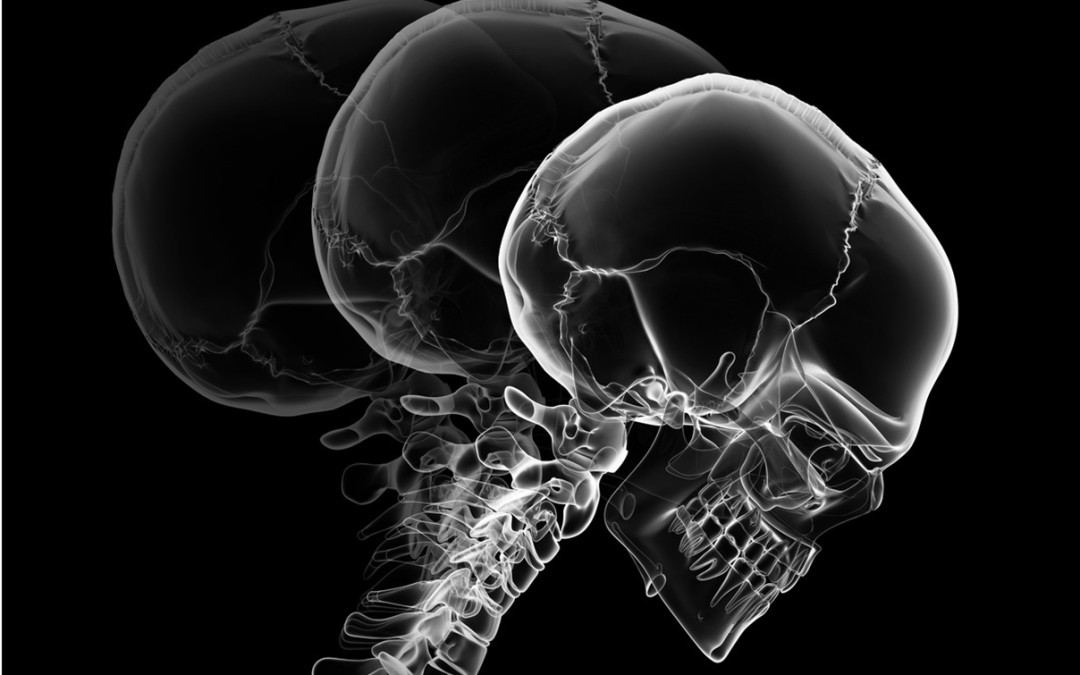Roughly two-thirds of your clients will experience neck pain at some point in their lifetime. Here’s how two NASM Corrective Exercise Specialists say you can help clients protect that vital segment of the spine.
BY LAURA QUAGLIO
Your neck is a complex structure that needs to manage a heavy load—your head!
The Cause of Posture-Related Neck Pain
Flexion. Extension. Rotation. Movement through a multitude of planes. The complex structure of the cervical spine—including its seven vertebrae and the related joints and muscles—allows the neck to do all of this and more. In fact, when a person is upright, the posterior neck muscles never rest: If they did, gravity would cause the head to pitch forward, chin-to-chest, because the center of gravity of the head falls anterior to the atlanto-occipital joints.
That said, your neck is designed to balance its load: namely the 10- to 14-pound bowling ball that we call a head. Unfortunately, many of today’s occupations and pastimes cause the head to migrate forward—sometimes permanently. The result: For every inch the head juts forward from its intended position, the neck muscles take on a load equal to roughly 10 additional pounds. Stick your neck out just two inches, and your neck muscles are now straining to support the equivalent of three bowling balls. Add in some rounded shoulders—a common combination today—and it quickly becomes upper crossed syndrome.
Over time, this posture and other types of cervical spine impairments can lead to neck pain, stiffness, and cervical strains, as well as headaches, dizziness, and pain or weakness in parts of the body that lie below the cervical spine.
Watch for Head Displacement During Assessment
In some clients, you’ll see neck issues immediately: They won’t be able to achieve proper posture at all, even after instruction. Some may not be able to rest their head against a wall when standing with their back against it. But it’s also easy to forget to watch for impairments and dysfunctions associated with the neck, particularly in clients who have more noticeable impairments elsewhere or who don’t complain of neck pain or strain. Bottom line: When assessing every client, be sure to watch for any degree of forward head posture, as well as lateral flexion, translation (side-to-side movement), and rotation. It’s far easier to address and correct these impairments before they reach extremes.
Identify At-Risk Clients
People with the following hobbies, interests, and professions are more likely to have upper crossed syndrome and the associated stiff or sore neck.
• Office workers who work on a computer
• Drivers (truck, cab, delivery van, etc.)
• Musicians, particularly those who play asymmetrically (such as flute and violin players) and those with heavy instruments (such as trombone or trumpet players)
• Chefs, surgeons, dentists, and other people who lean over their work
• Runners, cyclists, baseball players, and many other types of athletes
Tip: Observe these clients in their “natural habitat.”
Watching these populations in action—and in motion—can help you recommend postural modifications and exercises to compensate for imbalances created during their activities. If you’re not sure what “proper form” should be for a particular type of musical instrument or sport, ask the client if you can work with his or her coach or instructor to find a body position that won’t impede performance.
When Medical Attention Is Needed
Though neck pain is a common complaint, it can sometimes be a sign of a serious problem or health condition, such as arthritis, nerve compression, or a herniated disk. If a client is also experiencing numbness, pain that radiates toward the shoulder or arm, or a loss of strength in the arms or hands, instruct them to seek medical attention. Consider developing a network of trusted professionals—such as chiropractors, Active Release Techniques (ART) practitioners, and massage therapists—to whom you can refer clients with issues like these.
Smart Move
The first step in addressing cervical spine impairments is to inhibit via foam rolling, self-applied pressure, or instrument-assisted pressure. For neck impairments, you’ll want to focus on the thoracic spine, sternocleidomastoid, levator scapulae, and upper trapezius.
The neck can be very difficult to target without a tool such as a Thera Cane massager or Body Back Buddy, which you can make available to clients during sessions. Or show them this move, which uses a tennis ball or lacrosse ball to target this tough-to-reach spot.
Self-Myofascial Release of Sternocleidomastoid Muscle with a Tennis or Lacrosse Ball
A. Stand beside the corner of a wall, placing a tennis ball or lacrosse ball between the side of your neck (sternocleidomastoid muscle) and the corner of the wall.
B. Make sure the ball is positioned over the most tender spot of the muscle. Press your body weight into the ball and the corner of the wall. Hold for 20 to 30 seconds, then move to roll the ball around the surrounding area.
BOOST YOUR SKILLS
Get Your CES
Important information about NASM’s Corrective Exercise Specialization (CES).
What it is: CES provides personal trainers with specific tools and a systematic approach to combatting muscle imbalances and movement issues—including problems like upper crossed syndrome and lateral flexion, translation, and rotation of the head—which are common in today’s population.
Who it’s for: CES is for any personal trainer or fitness professional who wants specific knowledge that will help them address client issues like movement deficiencies and muscle imbalances.
What it takes: Trainers seeking a CES must pass an online exam. Options are available for a live workshop, and there’s a six-week online practical application course as well in addition to the textbook and online materials.
Benefits to your business: Trainers with NASM specializations may see their income increase. CES applies to almost any client population; some personal trainers with a CES work for professional sports teams.
Learn more: Visit nasm.org/ces or call 800-460-6276 for more on the program. Refer to the NASM Essentials of Corrective Exercise Training textbook for more specific information on combatting common cervical spine impairments.

